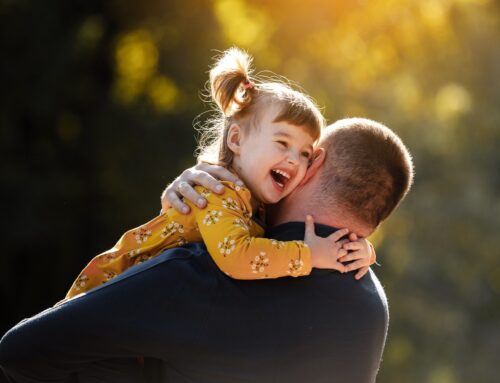 As children, we learn how to navigate life by what we hear, observe, and experience. What is the cost of sharing misinformation with our children? Could there be a better way?
As children, we learn how to navigate life by what we hear, observe, and experience. What is the cost of sharing misinformation with our children? Could there be a better way?
Up to the age of nine we have little interest in cognitively understanding what we experience. Nor do we have the skills, or abilities, to process many of life’s significant events.
Our well-meaning parents, grandparents, teachers, and guardians pass on what they have absorbed during their childhood. We then teach our children how to navigate life’s experiences; blindly following what we were taught.
One of the myths we have acquired over time: children are resilient. We believe children do not experience life’s challenges the emotional way an adult would. We believe they have the capacity to bounce back quickly.
Our current situation is demonstrating another perspective – children are struggling.
As adults, we process stress based upon what we know. Many of us were taught to self-isolate, be strong for others, stay busy, or wait for time to take away our pain. As children we were encouraged to replace our loss with food, games, toys, and animals. We were taught to bury our pain and distract ourselves from the emotions we didn’t want to face. These are the same coping skills we are unintentionally passing onto our children.
Today, we must do things differently. When it comes to identifying and processing emotional pain, we have to do better. We must provide our children with a different role model than pretending we are all okay.
How do we do this?
- We go first. We show our children we are not okay. We tell them how we are feeling. We provide them an example of how to express their emotions and show them it is okay to talk about loss.
- We create a safe place. We become a heart with ears, open to listening to how our child is feeling without trying to make things better, judge or fix. We allow them a safe place to express how they are feeling.
- Refrain from telling them you know how they feel. A child will have their own feelings, separate from our own. We may remember how it felt when we experienced a loss. However, what our children are experiencing today, we can not truly comprehend. We cannot fully understand because we have not experienced this type of significant change in what was familiar.
- Avoid replacing the loss. Do not buy them toys, give them extended time on their devices, or food to comfort their unhappiness. Be there for them. Be present. Teach them how to be honest with their emotions. Helping them to identify, and label, how they are feeling is one of the most powerful ways of defusing the emotion.
- Be available organically. The best discussions take place in the car, at bedtime, spontaneously. Be available when your child is ready to share. Avoid forcing a discussion.
My father-in-law used to say parenting was the only job we did without training. We never really know how we did until our job is finished. As parents, we do our best to prepare our children for life. We invest time, energy, and money into teaching them how to read, write, and do math. We give them the practical skills, to ensure their survival. Many times, we may overlook the emotional lessons. This is usually because no one gave us any emotional instruction. We teach them how to obtain ‘stuff’, but we seldom give them the tools to process the loss of that same ‘stuff’.
To reference Russell Freidman, “In no other life area does crucial inbound information have greater consequences than in our emotional response to loss and other grief producing events. Grief, though infrequent, is universal and inevitable.”[i]
To learn more about how to support your child, through this loss, one valuable resource is the book, When Children Grieve. Another option is the four-week Helping Children with Loss on-line program. As an adult, The Grief Recovery Method program, remains a proven resource.
Tammy Adams is a certified grief recovery method specialist and provides services for Brant Mental Health Solutions.












 Sharon Walker, MSW, RSW
Sharon Walker, MSW, RSW Jordon Iorio Hons. BA, RSW
Jordon Iorio Hons. BA, RSW Christine Bibby, B.S.W., M.S.W., R.S.W.
Christine Bibby, B.S.W., M.S.W., R.S.W. Brianna Kerr, RSW
Brianna Kerr, RSW Danielle Vanderpost, RSW
Danielle Vanderpost, RSW Daniela Switzer, MA, C.PSYCH
Daniela Switzer, MA, C.PSYCH Tammy Adams
Tammy Adams Jade Bates, RMT
Jade Bates, RMT Caitlin Schneider
Caitlin Schneider Dr. Crysana Copland
Dr. Crysana Copland
 Amy Dougley
Amy Dougley Emily Green
Emily Green Bill Dungey, RSW
Bill Dungey, RSW



 Jessica Moore, RSW
Jessica Moore, RSW Abigail Wragge, RSW
Abigail Wragge, RSW